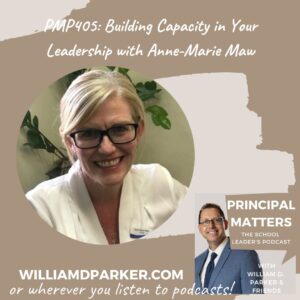Podcast: Play in new window | Download
Recently, Howard Schultz, the owner and CEO of Starbucks announced he will be retiring as CEO of the company.

This news comes after several years of stunning success for a company whose stock price rose from $7 a share during the recession to $56 a share this past week.
As a part of my commute, I’ve been listening to the audio-version of Schultz’s book, Onward: How Starbucks Fought for Its Life without Losing Its Soul. In the book, one story that inspired me happened in 2008. This was when Schultz decided to return to the position of CEO at Starbucks. At that time, the economy was in recession, Starbucks had over-expanded, and many of its locations were losing connection with customers and quality in its brewing. One of his first decisions was to shut his stores across the U.S. for a day in order for baristas to be retrained in making exceptional espressos.
As the owner of Starbucks, Howard Schultz has enjoyed growing the company from a handful of stores to a global enterprise. And even though he could have remained in retirement and enjoyed his chair on Starbuck’s board of directors, he saw the company beginning to lose focus on its core values.
In the book, he explains how he had kept it a secret that he was returning to the helm of the company. On the morning that the news of his return would go public, he woke up before dawn and drove to his Seattle’s Pike Place store where he had worked twenty-five years earlier and still carried the key to the store with him.
That morning, he let himself into the empty shop. As he enjoyed the aroma of ground coffee in the air and ran his hands over the wooden counters, he remembered his first years serving customers in that store. He thought about the magic of connecting coffee lovers with a favorite brew. He yearned for a return to his roots while at the same time providing innovative experiences for new customers.
Later that day at Starbuck’s corporate headquarters, he announced to his employees and the world that he was returning and that the company was transforming every part of their business, returning to its core values, and committing to innovation.
As I listened to the stories from Howard Schulz, I thought about how his lessons are good reminders for school leaders or leaders of any organization. Yes, as school leaders, you are leading organizations committed to an entirely different kind of mission, but at the same time, you share some common similarities.
Here are just three takeaways I believe can transform they way anyone leads a school, district or organization:
3 Commitments for Providing Excellence for Your School
1. Are you committed to a quality product?
Even as Starbucks faced closing stores across the U.S. and globally, Schultz made it his first priority to focus on the simple process of coffee brewing. He instinctively knew that if customers were not served distinctive, high-quality flavor, they would go elsewhere. As a result, retraining baristas and refining the roasting process were part of the plan.
When you think about your schools, no matter how beautiful or simple your building or classrooms, nothing replaces the quality of the learning students experience. And quality teachers are the most important factor in providing quality instruction. I agree that a quality teacher can take an empty classroom and reach students with amazing lessons. Imagine what he or she can do with strong support and resources.
Yes, your tasks may include organizing master schedules, creating remediation plans, updating curriculum updates or fixing bus schedules. But at the end of the day, students will benefit most from the rigor, relevance, and relationships they encounter from teachers. How’s the cup of coffee you are serving students every day?
As a school principal, summers are often your most important time of the year for hiring. In my years of hiring, as I sat with candidates interested in joining our team, I would often explain the values of our school community: How we saw each student as if he or she was one of our own children. How we valued input and wanted teachers who were highly qualified, had high expectations for curriculum, but also loved kids and cared about others.
These values must be non-negotiables if we are to provide the highest quality for students. By attracting and retaining excellent teachers, you are staying committed to providing students with highest education quality “cup of coffee” possible.
2. Are you committed to strong partnerships?
Schultz refers to his employees as partners. And the term is not just one used for messaging. Even part-time Starbucks partners are given health care options and matching contributions in retirement investments. As a result, the men and women who work at the stores are often high-quality individuals who care a lot about the company and culture of their work.
Educators are constantly reminded to do what is best for students. That is true, but let me share another truth: It is equally important to do what is best for your teachers, staff, and team members if you want great care for students. When you show the adults in your building the kind of care, concern, and commitment you want students to receive, you are modeling the kind of atmosphere you want everyone experiencing at your school or campus.
Let me share one small example. In my early years of teaching, I remember being allotted a set amount of money each year for classroom supplies. When I transitioned to assistant principal in a new district, my head principal had another philosophy. Each year she prioritized a percentage of the high school budget to stock an entire closet with classroom supplies. Throughout the year, teachers could stop by as needed to replenish supplies. This simple practice took time, prioritizing and forethought on the part of the principal, but teachers felt they were being treated as professionals and allowed them time to focus on teaching.
Committing to strong partnerships means rejecting an “us versus them” mentality. It means encouraging feedback and shared leadership. It means taking care of others when you have the means and opportunity so that they can in turn take care of the important business of school: students.
3. Are you committed to the promise of customer-experience?
As Starbucks grew into an international brand, one of the challenges was ensuring that customers would consistently find high quality products and service in any store they visited. This required focused training, strong management, consistent retraining, and meaningful feedback. Schulz had the company launch its first online Rewards Program and created social media sites where customers could make suggestions, respond to new products, or interact with one another and other Starbucks partners. As a result, millions of customers became fans not just consumers of Starbucks products and services.
At your school, you have the unique position of creating a learning environment for your most important customer: the student. Your community members are also your customers. And every experience they have with your school affects whether or not they are fans of the experience.
In my front office staff, for instance, each year I would designate a point-person for guest hospitality. Instead of viewing parents or students in the office as visitors, our goal was to treat them as guests. This meant we kept a fresh pot of coffee brewed and available in the morning. We answered phones or greeted people with a smile and asked, “How can help you?”
During school announcements, we highlighted student and team successes. We shared digital versions of announcements so they could be displayed on big-screen TV’s in the commons areas or played on Smart Boards in classrooms. Each week we would email all parents with a summary of the week’s activities, highlights, and recognitions that students achieved. And we shared out happenings throughout the day on social media outlets including Twitter, Instagram, and Facebook.
And, of course, the way you interact with students one-on-one tells them immediately whether or not you value them and their opinions. Yes, schools are places of learning and education. But they are also places of experience and belonging. Give your students the kind of stable, consistent, safe and welcoming environment you would want for your own children.
Let’s Wrap This Up
As the owner of Starbucks, Howard Schulz had a deep, personal investment in whether or not his company succeeded. And this personal commitment often meant he was willing to make whatever changes in processes or people to see that happen. The result was watching his company not only rebound from recession but also watching it return to a flourishing and thriving international brand.
Yes, our schools may never experience the kind of entrepreneurial or profit-earning moments that a business as Starbucks can create. But we can learn lessons from its success story. By committing to highest quality education for students, the highest quality care for our people, and the highest quality experience for our communities, we can provide a place of magic and belonging for others. Our students, teachers, and communities deserve a place of learning where they feel valued, inspired, and proud to call their own.
Now It’s Your Turn
What is one way you are ensuring the highest quality curriculum and instruction for your students? How are you giving your teammates the kind of experience you would want in a working environment? Do your students and parents find themselves treated as guests at school? How can you enhance their experience in the communication and interactions they receive?
Sign-Up For Free Updates and Ebook
When you enter your email address below, you will automatically receive my newest posts and a free Ebook, 8 Hats: Essential Roles for School Leaders. Let’s keep learning together!
Subscribe for free weekly updates and receive free e-book!
(function($) {window.fnames = new Array(); window.ftypes = new Array();fnames[0]=’EMAIL’;ftypes[0]=’email’;fnames[1]=’FNAME’;ftypes[1]=’text’;fnames[2]=’LNAME’;ftypes[2]=’text’;}(jQuery));var $mcj = jQuery.noConflict(true);
Principal Matters–The Book!

School leaders are very busy, so each of the twenty-four chapters is designed as a quick-read and followed with take-action questions for follow-up or reflection. If you want practical ideas on understanding your purpose, managing school teams, dealing with challenges, and leading with courage, action, motivation, and teamwork, go HERE to pick up a copy for you or your team.
Messaging Matters

Harness the power of messaging to create a culture of acknowledgment, respect, and celebration. Written specially for leaders, this title is divided into three parts, helping readers to maximize their role as chief communicators with students, teachers, and parents and community. Each chapter includes suggestions for using digital tools to enhance messaging and ends with reflection questions and practical next steps.


